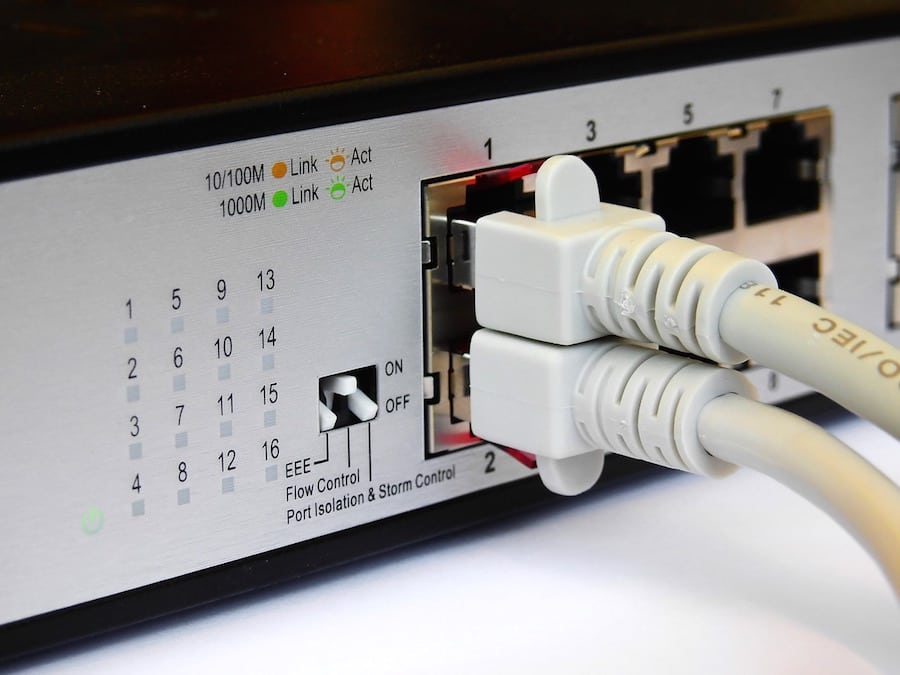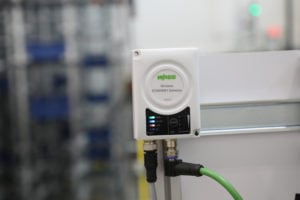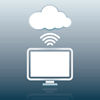What’s a WEG?
Versatile wireless Ethernet gateway products can streamline designs and clean up complex cable situations.
 Wireless Ethernet gateways are a versatile all-in-one product, combining the function of a wireless access point with a router, while also serving as a firewall. Adding these devices to a design provides wireless connectivity to multiple users and pieces of equipment. It can provide a dynamic host configuration protocol to individual users, collect information from equipment through sensors in an industrial environment, or enable wireless coordination across equipment. They streamline designs, clean up work environments by eliminating the need for many cables, and make network installation faster and easier.
Wireless Ethernet gateways are a versatile all-in-one product, combining the function of a wireless access point with a router, while also serving as a firewall. Adding these devices to a design provides wireless connectivity to multiple users and pieces of equipment. It can provide a dynamic host configuration protocol to individual users, collect information from equipment through sensors in an industrial environment, or enable wireless coordination across equipment. They streamline designs, clean up work environments by eliminating the need for many cables, and make network installation faster and easier.
Companies that specialize in industrial computing equipment, including NuWave, Prosoft, and Moxa, typically offer these products. Now, WAGO has added one to its line of connectors, terminal blocks, and automation equipment — the first connector company to do so. We talk to Charlie Norz, product manager, WAGO-I/O-SYSTEM about the company’s new wireless Ethernet gateway (WEG) and how these products are influencing industrial design.
Connector Supplier: Why should someone use a wireless Ethernet gateway?
 Charlie Norz: On the plant floor, many PLCs and other devices communicate via Ethernet protocols. If a new machine is added and needs to communicate with other devices, electricians need to run Ethernet cables from the new equipment to other devices. Or perhaps the new equipment is movable like a crane, or a machine on wheels, or it rotates like a filling machine; in these applications, it may be simpler and more cost-effective to use a WEG than to replace the traditional copper Ethernet cable. Installing two paired WAGO WEGs is very simple. Their IP67 housing allow them to be mounted on the outside of almost any machine. Because of this, they can be less costly when compared to the labor needed to run cables across a plant floor.
Charlie Norz: On the plant floor, many PLCs and other devices communicate via Ethernet protocols. If a new machine is added and needs to communicate with other devices, electricians need to run Ethernet cables from the new equipment to other devices. Or perhaps the new equipment is movable like a crane, or a machine on wheels, or it rotates like a filling machine; in these applications, it may be simpler and more cost-effective to use a WEG than to replace the traditional copper Ethernet cable. Installing two paired WAGO WEGs is very simple. Their IP67 housing allow them to be mounted on the outside of almost any machine. Because of this, they can be less costly when compared to the labor needed to run cables across a plant floor.
CS: How do you set up a WEG?
Norz: The WEG communicates with Ethernet-based industrial protocols such as Modbus/TCP, EtherNet/IP, PROFINET, or PROFIsafe, and has a web-based management system that is easy to configure. For users that may be looking to use the WEG as a copper cable replacement, two WEGs can be paired with each other. In paired configurations, the Ethernet packets that enter one WEG are outputted on the other WEG.
CS: What frequencies can be used with a WEG?
Norz: It supports industrial-grade Bluetooth and all LAN standards. These options have a range of about 1,300 feet and can be used even if there are obstacles, such as equipment or structures in the way or non-fire walls, but the range is reduced. WLAN 5.0 GHZ may be used if the user wants to use the WEG as an access point for other devices like tables or smartphones.
CS: How does a WEG connect to an Ethernet device?
Norz: Our WEG has two waterproof IP67 M12 connections. One connection is used for 24VDC power and the other connection is for the Ethernet connection. The WEG can be connected directly to an Ethernet device like a WAGO PLC, or it can be connected to an Ethernet switch in applications where multiple devices need to connect to other devices over Ethernet.

CS: Why did WAGO decide to offer a WEG?
Norz: WAGO has three main business divisions: Automation, interface, and interconnect. We provide products and services for all three of these, and we saw a need for a wireless Ethernet gateway within the automation division, so the WEG was developed.
CS: How does WAGO’s WEG differ from others on the market?
Norz: It’s ultra economic — a third of a price of a competitor who has a device with similar qualities. It’s configurable between WLAN and Bluetooth—many competitors are just one. It has multiple built-in security features (WPA/WPA2-PSK, LEAP, PEAP). It offers direct mounting on equipment due to its IP65 housing and built-in antenas, LED diagnostics, and web-based management for web visualizations of a controller that it may be connected to and allows for simple and fast configuration.
CS: What are the requirements for the connectors and cables that are used with WAGO’s WEG?
Norz: The connections used are power: M12 A-type encoded or our 756 cables for power, and Ethernet: M12 D-Type encoded, or our 756 cables for Ethernet.
Interested in a specific market? Click a market below for current articles and news.
Automotive, Consumer, Industrial, Medical, Mil/Aero, Datacom/Telecom, and Transportation
- Meet the Connector: DIN Standard Connectors - April 16, 2024
- Software-Driven Radio Reinvigorates Old Technology - April 9, 2024
- What is a Busbar? - April 2, 2024












